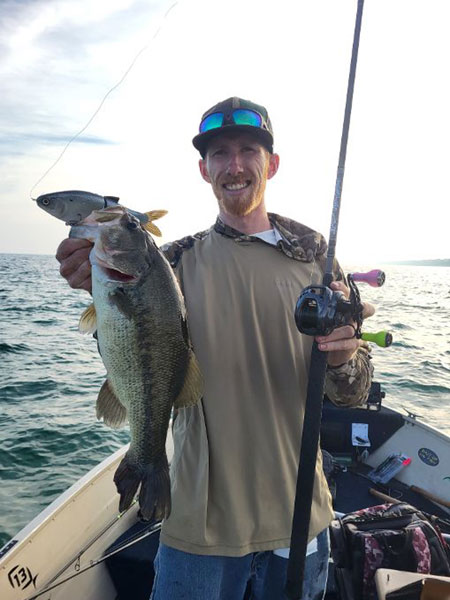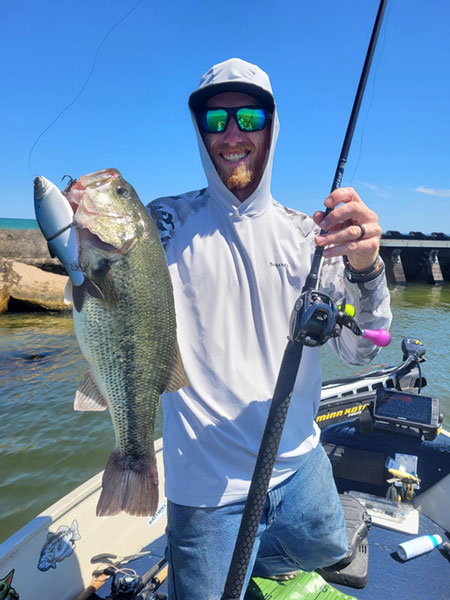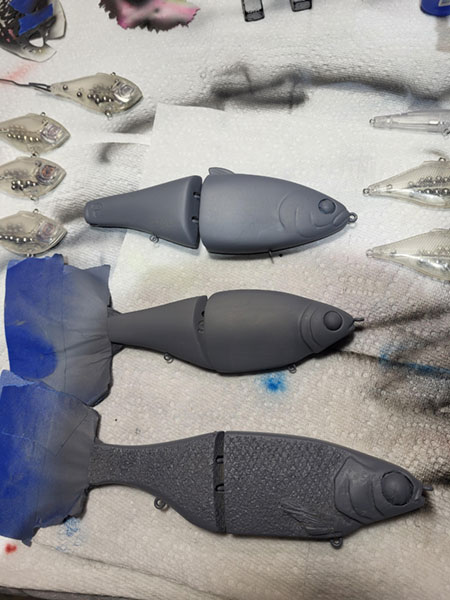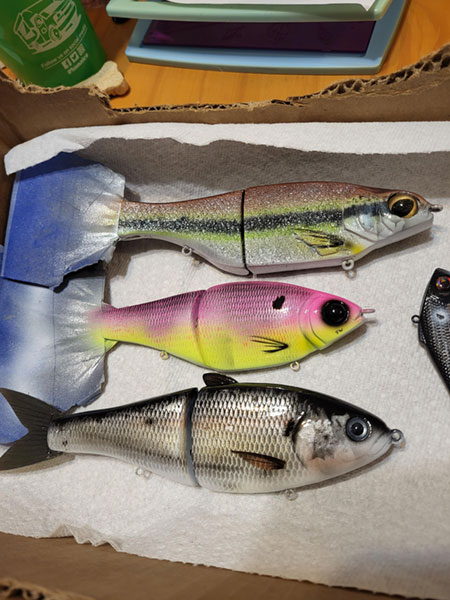By Louie Stout
 Floyd Wolkins with nice bass
Floyd Wolkins with nice bass
Floyd Wolkins is a firm believer in big bait, big fish.
The Cassopolis, Mich. angler has proven that time and again as an addicted glide bait angler.
Glide baits aren’t the typical crankbait or soft plastic size that most Michiana anglers fish. They have broad, fish-shaped bodies and measure 6- to 10-inches long and weigh 2 ounces or more.
Wolkins insists these giant lures catch big bass, pike, and muskie in Michiana’s waters and will reveal hulking fish you didn’t realize existed in area lakes.
“The first time I caught a nice bass (3½ pounder) on one (Storm Arashi Glide) was at Juno lake and that opened my eyes,” he says. “And one day I caught a 6½ and a 7 both within an hour on another lake and that really started my addiction.”
Those two big fish were caught on the 6-inch Megabass Mag Draft soft-bodied bait. Today, Wolkins prefers the larger, harder bodies that cost upwards of $150 or more.
“Few, if any, anglers around here use them because they think our bass are not big enough to hit them,” he says. “But I’ve caught small bass on them as well as big ‘uns.”
He started dabbling with some of the less expensive designs, such as the River2Sea S-Weaver ($20) and the Storm Arashi Glide $40). His tackle box now includes glide baits valued as much as $300 each.
Don’t assume all glide baits are created equal or perform similarly, he says. It takes time to differentiate inherit characteristics of each one and what it takes to trigger bites.
There are days, he adds, when one action gets no looks but another brand might trigger vicious strikes.
“But I’m telling you, the higher priced custom baits come through the water and perform better,” says Wolkins.
For beginners, he recommends the Spro Chad Shad as the best bang for your buck – at around $60. From there, you can upgrade to the BGC 7” Shad, which costs $150 unpainted or $200 painted.
Even though many of our lakes don’t have shad, shad colors are among the most popular.
“Sometimes I don’t think color really matters,” Wolkins says. “I think they just hit it because of the action and the size.”
He says he sees about 80 percent of the strikes he gets. Oftentimes, the bass will follow the bait to the boat before biting it.
“I’ve seen packs of 10 to 15 fish follow my bait and suddenly one comes out of the group and T-bones it,” he says. “It will blow your mind what you see and what fish do with these lures. It’s an incredible bite, and I think that’s what gets me excited about fishing them.”
How to fish them
 Floyd Wolkins
Floyd Wolkins
Glide baits typically aren’t fished deep, although he’s had fish come up out of 20 feet to smack his lure that was gliding 5 feet down.
Most of the time he fishes them along edges of wind-blown breaks, making casts parallel to the edge.
“If there are weeds growing off the bottom of the break and you have forward facing sonar, you will see fish come off the bottom to eat the lure,” he says.
He likes to work the lure similar to how one would fish a jerkbait, with a couple twitches followed by a pause. That pause is when many strikes occur. Sometimes you can get reaction by slow winding the lure over shallow weeds.
“I like to work the bait fast a few times, chopping them through the water before a pause,” he described.
Equipment
 Floyd with his
Floyd with his
Wolkins prefers an oversized crankbait rod. He uses an 8-foot heavy rod with a moderate action that allows him to bomb the lure farther distances. And because the baits are so big, the softer rod absorbs the hard pulls and reduces the likelihood of hooks ripping free.
He also prefers 20- to 25-pound Trilene Big Game monofilament because it’s more abrasion resistant and has the stretch needed for hooking and playing big fish on big baits.
When fishing around pike or muskie, he will add a 90-pound fluorocarbon leader about a foot or so between the main line and lure. It may stifle the lure action slightly, but he still catches fish and doesn’t get bit off.
Get ‘em painted
 Blanks ready for painting
Blanks ready for painting
Wolkins doesn’t sell the baits, but has turned his glide bait passion into a side job of painting lures for anglers. He has customers from around the country send him baits for painting and has built a reputation as one of the top lure painters in the Midwest.
“You send me a reference picture of how you want it and I will paint it accordingly,” says Wolkins. “I do smaller baits as well as glide baits.”
 Lures being painted by Wolkins
Lures being painted by Wolkins
You can contact him on Facebook, through his Instagram connection (Floyd_fishing) or call him (231-292-2283).


